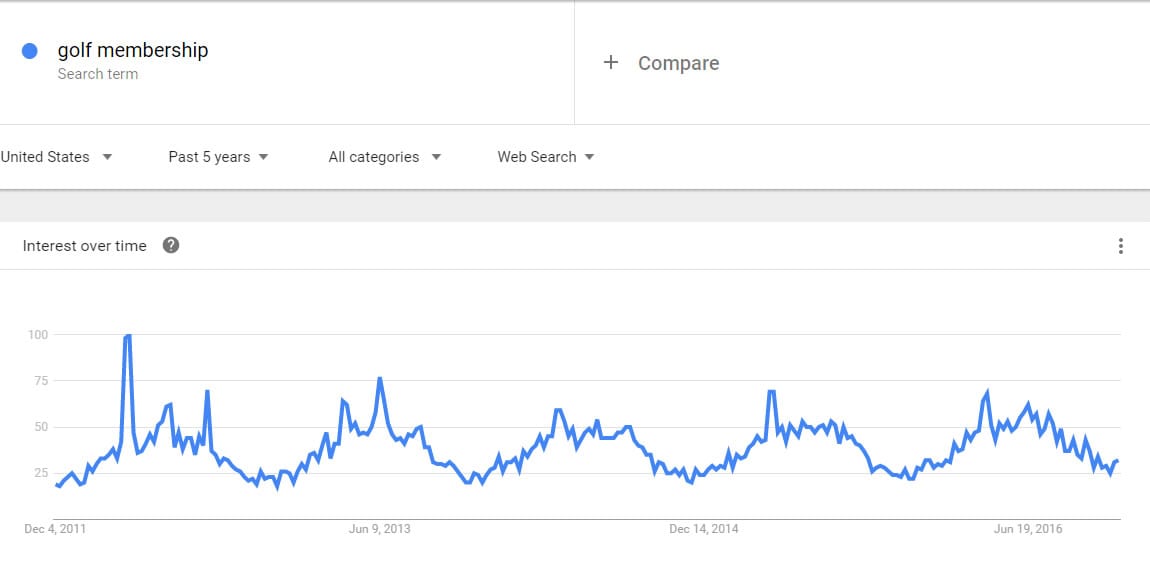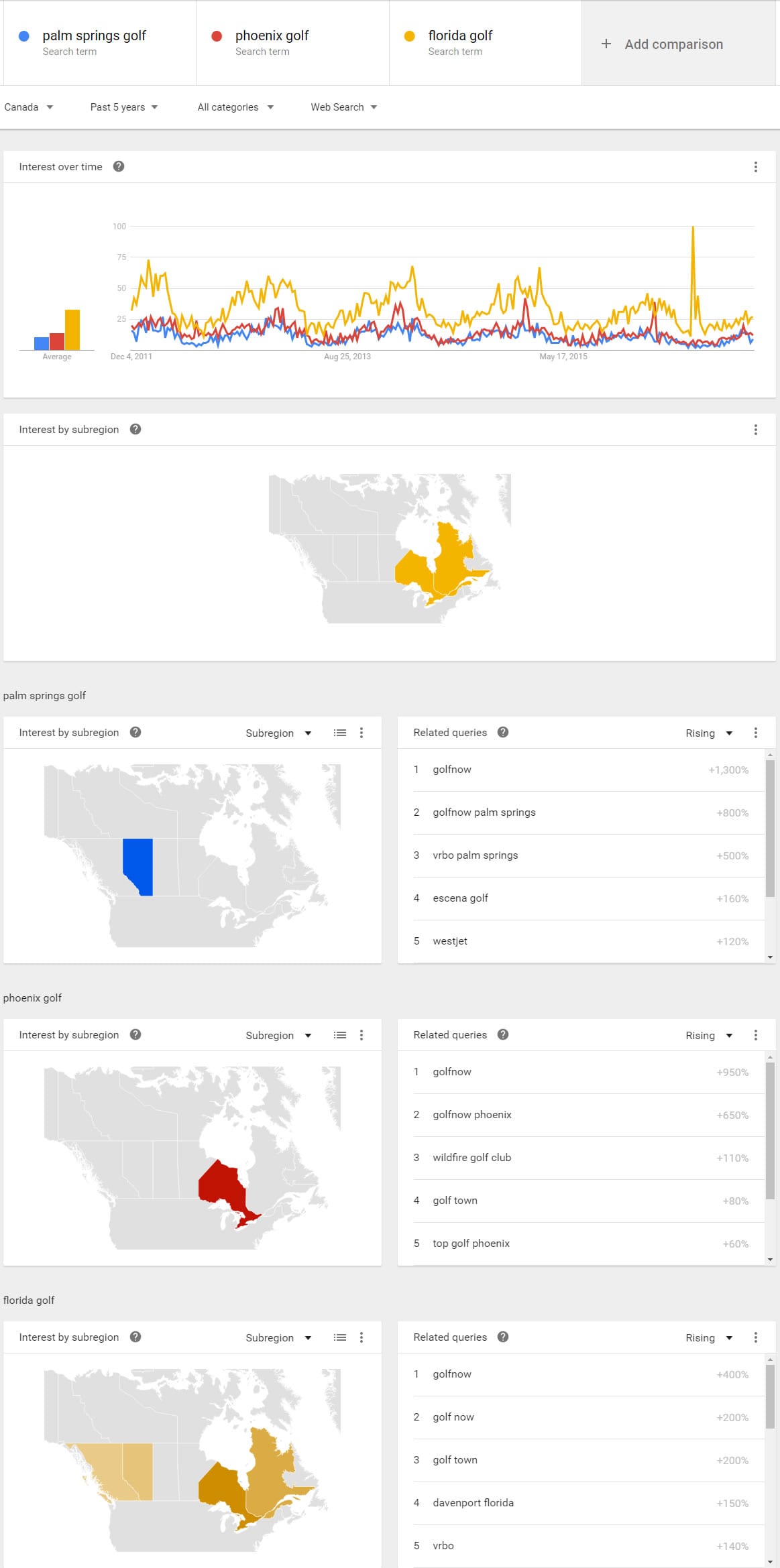I spent some time yesterday talking about predicting (sort of) the future using a free tool called Google Trends. Google Trends gives us information on Google searches – things like what gets searched, when it gets searched, where in the world people search, etc. We used a couple of seasonal examples yesterday but now I’d like to look at Google Trends from a golf course perspective. Let’s have a look at two quick ways golf courses can use Google Trends.
Get Ahead of the Curve
We do a lot of tourism marketing work, so the idea of promoting events is nothing new. Over the years, we’ve learned that timing is everything when it comes to marketing an event. Market the event too early, people forget about it. Market it too late, people have already found something else to do. We also find that many companies miss the marketing window because they don’t have things in place. How is someone supposed to buy something from you if you don’t have it available when they want it?
Google Trends gives us historical data on search terms. Let’s look at a simple example.

Here is the 5-year search data from the United States for the phrase “golf membership”. The numbers represent interest over time (check out the post from yesterday for an explanation). If we look a bit deeper, we see that searches for “golf membership” peak around the middle of April each year. It’s also interesting to see some peaks in June. Perhaps that’s when Mom and Dad are looking for things to do with the family once the kids are done school.
If I’m in charge of selling memberships at my golf course, this information is important. It means that I need to have all membership information on my website in January or February.. posted in time for search engines to discover and index it. If I’m waiting to put up membership information in March or April, I might miss my search window. Information posted needs some time to be found via search engines. Just because you post it today, doesn’t mean Google will find it right away.
I’d also investigate the June peak. This could be an interesting time to run a small family membership advertising campaign through Google. Perhaps you offer a membership special in June too. Just some things to think about.
Sometimes you can click through to a state by state level if search volume is high enough. It’s interesting to see the many peaks in the California data. This might indicate different audiences are searching for information. Locals might search in the spring, and snowbirds might search in the fall. You may want to tailor your content and advertising appropriately.
Know Your Audience
Us Canadians sure love our golf. One problem… it gets a bit chilly up here in the winter. Like many other cold weather climates, we look south for a quick golf fix.
Each province tends to have their favourite locations – Florida is a big destination for Ontario and Quebec while California and Arizona are popular with British Columbia, Alberta and Saskatchewan.
We can use Google Trends to learn more about the search tendencies of Canadians when it comes to popular golf destinations. I was going to break this screenshot up, but there’s lots of good info on it, so I’m giving it to you in one giant chunk!
Note: I used the search terms that I hear my fellow Canadians use the most. I am aware that Phoenix is in Arizona and that Florida is not a city. But hey.. this is how we say things around here. Here’s a link to the data below if you want to see the working version.

Lots of data huh? So what does it all mean? It means that if I’m marketing Florida golf packages to Canadians, I might want to look beyond Ontario and Quebec when I advertise. It also means that different regions and destinations have different search patterns. We don’t all look for golf packages in the fall. Some of us don’t start looking until January. Looking at the “Related queries” gives us an indication of related searches – things like Golfnow, VRBO and even specific golf course names. Perhaps there are opportunities for partnerships or cross promotions with these entities.
This gives us some incredible insight into target audience groups. Some courses that collect information at the point of sale may see correlations here, but many courses bypass this collection step and just shove the $$ in the till.
Want to dive even deeper? Here’s a link to the same data but from searches within the United States. Some interesting nuggets in there too.
So what have we learned? Google Trends is a free tool that allows you to gain valuable insights into how your customers search. That’s the kind of data that you might want to pay attention too…
Have a golf marketing question? Drop us a line and be sure to sign up for our golf marketing e-newsletter below.
Recent Posts
Navigating the Digital Buying Cycle: Strategies for Modern Consumers
In today’s fast-paced world, where information is just a tap away, the buying cycle has transformed dramatically. Gone are the days when consumers...
Digital Marketing Strategies in the Off-Season
Ah, the off-season. For some businesses, it’s a time to kick back, relax, and sip on a well-deserved latte. For others, it’s a...
How ChatGPT is Transforming Online Search Behaviour
In the ever-evolving landscape of digital information, the way we search for answers is undergoing a seismic shift. We got used to searching...



